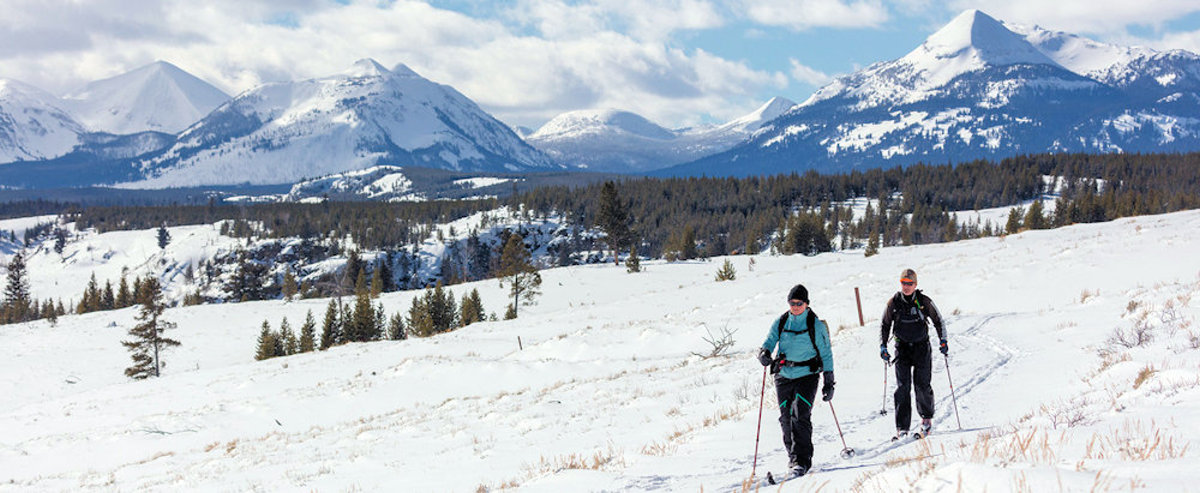Most of Yellowstone is backcountry and managed as wilderness; many miles of trails are available for skiing. Track is set only on a few trails. All unplowed roads and trails are open to cross country skiing and showshoeing. When skiing on unplowed roadways used by snowmobiles, keep to the right to avoid accidents.
There are dangers inherent in wilderness: unpredictable wildlife, changing weather conditions, remote thermal areas, deep snow, open streams, and rugged mountains with extreme avalanche danger. When you choose to explore Yellowstone, you experience the land on its own terms; there is no guarantee of your safety. Be prepared for any situation. Carefully read all backcountry guidelines and regulations, and know the limit of your ability.
Most trails are marked with orange metal markers attached to trees. Few streams have bridges. Parties venturing into the backcountry should carry a USGS topographic map and a compass and know how to use them. Even on a well-marked trail, it is easy to get lost in a “whiteout” or blizzard. Only skiers thoroughly familiar with the area should attempt off-trail travel. When planning your trip, get specific information on conditions from rangers at a ranger station or visitor center.
Park elevations with adequate skiable snow range from 7,000 to 10,000 feet (2133 – 3048 meters.) Skiers and snowshoers who live at lower elevations should take a short day or overnight trip to test their capabilities before attempting longer outings.
A Backcountry Use Permit is required for all overnight ski trips. Contact a park ranger at a ranger station or visitor center before you begin a ski trip– whether for a few hours or several days. Trip planning should include allowances for limited daylight, snow conditions, temperature extremes, and the number of people in the group, their experience and physical condition. Overnight ski and snowshoe trips during December and January are difficult due to short days, extreme temperatures, and soft snow. Learn as much as you can about winter survival. Talk with park rangers before you leave on any trip.
Choose skis and boots made for touring or mountaineering. Narrow racing skis won’t provide enough surface area to break trail.
